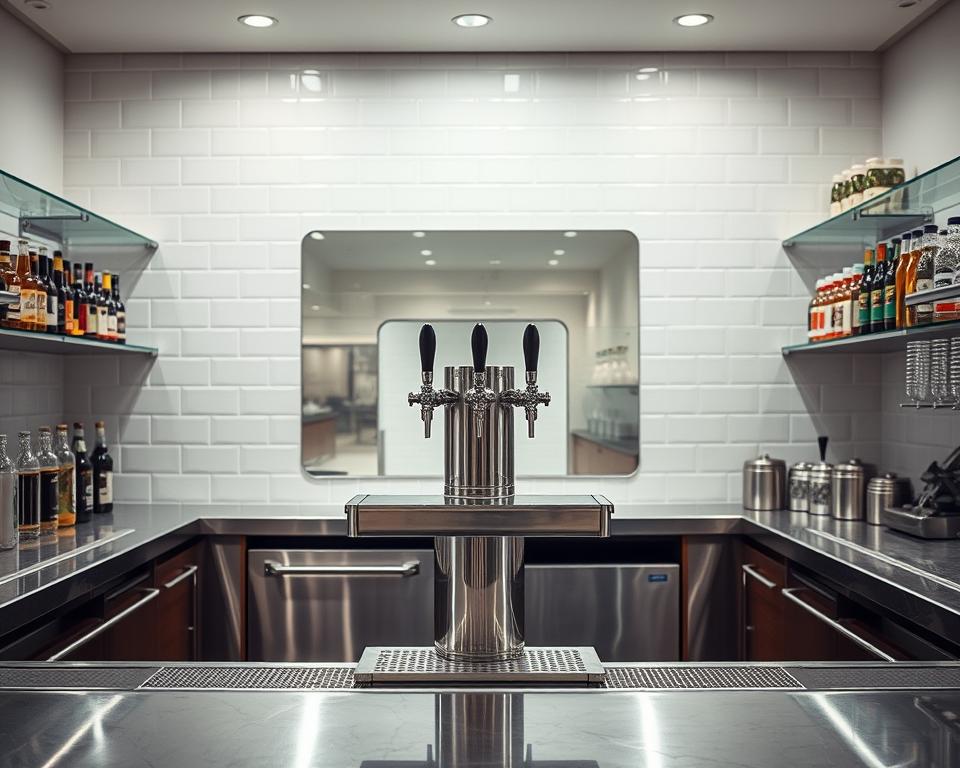Web Marketing 1on1: Customized Plans for You
In the year 2019, an impressive 22% of voice searches were aimed at regional businesses. This statistic underscores the necessity for customized online marketing plans to efficiently target community customers. Internet Marketing 1on1, initiated by Marketing 1on1 in 2001, specializes in designing tailor-made marketing solutions. These are closely matched to each unique need of individual business. Drawing on a wealth of experience from more than 20 years, this trailblazing digital marketing agency comprehends the nuances of effective online strategies. It allows partners to thrive in the cutthroat online arena. Utilizing advanced SEO methods, extensive digital services, and an easy-to-use management interface, 1 on 1 Marketing skillfully guides businesses through internet marketing’s complex dynamics.
Internet Marketing 1on1’s central purpose centers on generating individualized online marketing services that deliver concrete outcomes. It leverages data-driven observations and concentrates on connecting with local audiences, increasing the impact of online marketing initiatives. In an age where flexibility is crucial for thriving, tailor-made methods are vital. They not only boost marketing performance but also guarantee sustainable victory in the commercial terrain.
Comprehending the Significance of Personalized Online Marketing Strategies
Personalized online marketing approaches are essential for company expansion in modern competitive arena. They cater to individual client needs and preferences. Enterprises can thereby create messages that deeply resonate with their intended market. This customized approach yields enhanced participation and higher conversion rates.
Personalized marketing approaches have proven extremely successful. Enterprises employing these strategies can see increases in conversion rates up to 20%. Insightful firms are six times more likely to be lucrative year-over-year. Moreover, personalized marketing can result in revenue increases between 10% and 30%. These figures highlight the requirement of implementing customized methods for marketing achievement.
Leveraging data intelligence to grasp target customers boosts marketing performance. This strategy leads to improved client contentment and loyalty. Notably, 78% of customers are apt to become returning customers if offered personalized interactions. Additionally, 50% are more inclined to connect with brands that personalize their marketing communications. This illustrates how personalized marketing cultivates strong commercial connections.
Investing in personalized online marketing boosts consumer retention by 25%. Email initiatives with personalization achieve 29% increased open rates and 41% higher click-through rates. The economic gains are noteworthy, with email marketing yielding an average return of $42 for every $1 spent. This emphasizes personalized marketing’s importance in outperforming customer demands and achieving robust financial returns for businesses.
Explaining Internet Marketing 1on1?
Internet Marketing 1on1 offers a tailor-made strategy in digital marketing from Marketing 1on1. It crafts tactics aligned with the unique targets of each company. Businesses get personalized expertise focused on their individual needs.
With its foundation over two decades ago, Marketing 1on1 stands as a beacon of distinction in digital marketing solutions. By providing comprehensive evaluations and practical recommendations, it equips businesses to succeed in the digital domain. The implementation of cutting-edge tools like the My Local Everything Dashboard facilitates precise tracking of marketing campaigns.
This strategy connects companies closer to their clients, fostering communications that lead to greater commitment and conversions. Internet Marketing 1on1 secures that methods are in complete harmony with business objectives. This exact alignment aids in effectively engaging the intended market.
Understanding the Impact of Personalization in Internet Marketing
Marketing personalization is now crucial in enhancing consumer involvement and building solid bonds. Enterprises employing personalized content can provide distinct interactions, increasing fidelity and contentment. A remarkable research reveals 66% of buyers will leave a brand without personalized interaction. This emphasizes the requirement to grasp consumer behaviors and preferences thoroughly.
The 2011 Share a Coke campaign by Coca-Cola stands as a notable personalization case. It introduced personalized packaging, boosting sales after a prolonged downturn. This approach illustrated the effectiveness of personalized communications in winning over consumer preference. In the world of digital marketing, where consumers encounter thousands of ads on a daily basis, personalization is vital for standout strategies.
Gathering data from polls and communications helps businesses fine-tune their market understanding and craft effective campaigns. Personalized electronic messages, offering personalized greetings, add a individualized nuance that connects customers more closely. Personalized title lines in emails, research indicates, achieve a 29.5% improvement in email openings. This underlines the substantial role of personalized communications in captivating consumers.

Additionally, clients are often prepared to spend extra for personalized experiences that offer a personal touch. Analytics-based campaigns not only yield higher conversion rates but also boost customer satisfaction. Focusing on personalization allows enterprises to raise sales by up to 19% and consumer approval by 16%. Therefore, collecting and examining client data is crucial for perfecting personalization strategies and realizing marketing success.
Primary Advantages of 1 On 1 Internet Marketing Services
Tailor-made marketing offerings are growing in importance for corporate achievement. A staggering 76% of buyers now demand customized interactions. This shows a substantial move towards customized marketing approaches. Such tactics not only improve customer retention but also elevate conversion rates remarkably.
Companies that utilize personalized interaction establish stronger relationships with their customers. This cultivates loyalty and drives repeat business. The focus on customized outreach has evolved into a primary catalyst in realizing market victory.
Statistics reveal that 80% of customers favor brands that offer personalized interactions. Marketing efforts that address individual customer requirements often result in better ROI. Impressively, 84% of advertisers report that personalized gifts and direct mail command the greatest returns. Sprout Social’s success story, showing a surge in monthly recurring revenue from personalized initiatives, demonstrates the economic advantages of 1 on 1 marketing.
A tactical strategy is crucial when targeting high-value clients. For instance, B2B clients, who obtain over 120 emails each day, engage with customized outreach, prefer brands that recognize their unique challenges and requirements. Nonetheless, only 43% of advertisers think they can provide such personalized engagements at scale. This offers a chance for significant enhancement and spending.
Investing in personalized marketing results in elevated client happiness and dedication. This offers businesses a edge. A clear focus on specific client requirements enhances marketing efficiency. It highlights the importance and effect of 1 on 1 marketing tactics.
All-Inclusive Digital Marketing Offerings Offered
1 on 1 Digital Marketing delivers an assortment of digital marketing services targeting improving your internet presence. Such options include vital elements like SEO and social media marketing, necessary in the modern competitive arena. SEO strategies aim to elevate online visitors through organic search results, ensuring a sustainable impact for businesses.
Employing social media marketing is essential for connecting with audiences across channels such as Facebook, Twitter, LinkedIn, and Instagram. Via timely content distribution and dynamic engagement, companies can greatly increase their online footprint. Adding conversion rate optimization (CRO) further enhances these initiatives by turning more traffic into potential customers.
The integrated strategy in digital marketing presents a all-encompassing perspective of your products or services. This enhances the attractiveness to clients. Figures demonstrate that adept digital marketing drives lead generation by the thousands, evidencing that well-planned approaches produce significant ROI.
| Service Type |
Description |
Gains |
| SEO |
Improves website ranking on search engines through optimized content and backlinks. |
Increases organic traffic, visible results within 30 days. |
| Social Media Marketing |
Interacts with consumers via targeted posts and engagements on social platforms. |
Builds brand awareness, drives engagement, connects with target audiences. |
| PPC Advertising |
Utilizes pay-per-click ads to gain immediate visibility and leads. |
Fast market entry, instant results for campaigns. |
| Email Marketing |
Communicates directly with subscribers through targeted campaigns. |
Effective for reaching large audiences, enhances customer loyalty. |
| Review Management |
Oversees online reviews to build credibility. |
Boosts image, and encourages consumer trust. |
Allocating resources to these broad marketing services enables businesses to engage their target market more economically than conventional methods. Digital marketing not only fosters participation but also secures a market advantage in the expansive online environment.
Utilizing SEO Solutions in Your Marketing Strategy
SEO offerings are essential in enhancing digital marketing performance. Google handles over 2 trillion queries yearly, showing the value of mastering search engine optimization. By adopting adept SEO approaches, businesses boost their digital footprint. This markedly raises their likelihood of drawing in potential clients.
Search term investigation is a fundamental aspect of SEO. Resources like Google Keyword Planner display critical data on search frequency and keyword competition. This information helps companies in measuring their services’ appeal and demand. It also assists in understanding area-specific search behaviors, allowing exact targeting.
Rival assessment is essential. Pinpointing the primary 10 competitors using primary search terms permits companies to optimize their material and search optimization approaches. High-quality, user-focused content is preferred over superficial content that might undermine rankings. This tactical method is aimed at ensure competitive advantage.
Adapting to trends is essential for maintaining relevance. The seasonal period underscores the importance of tracking marketing breakthroughs, including PPC and video marketing. Companies must monitor these evolutions to evolve their digital marketing successfully.
Understanding the marketing funnel’s intricacies is crucial for engaging audiences successfully. By focusing on the right messages and action prompts, businesses can elevate their conversion rates. In today’s digital landscape, focusing on SEO services catapults online marketing success.
The Importance of Online Branding for Businesses
Online branding is essential for contemporary business success. It enables businesses shine in a crowded market. By forging a consistent branding strategy across online platforms, businesses establish a singular identity. This uniform identity builds trust with consumers, fostering brand commitment.
Strong digital branding melds content, imagery, and customer interaction. Concentrating on these elements enables the crafting of a enduring brand image in the customer’s mind. Social media networks are prime venues for branding, engaging with billions each day. Such channels don’t just enhance visibility; they’re crucial for building customer loyalty.
Strong online branding does more than enhance brand visibility; it also elevates search engine rankings. Brands that embrace all-inclusive online strategies often attain better ranking results, producing more visitors. This, in consequence, elevates engagement and sales conversions. Marketing 1on1 highlights the critical importance of online branding for competitive edge and current relevance.
The commitment of 1 on 1 Marketing to online branding produces enduring connections with customers. Companies that prioritize their branding strategies typically benefit from elevated consumer allegiance and significant financial gains.
| Branding Factors |
Importance |
| Steady Messaging |
Fosters credibility and identity |
| Engaging Imagery |
Boosts visual presence |
| Consumer Participation |
Increases loyalty and retention |
| Search Ranking Optimization |
Boosts search rankings and site hits |
The Effectiveness of Internet Advertising
Internet advertising is essential in the current marketing, providing key benefits for engaging target audiences. It permits personalized communications to be sent to potential clients. By means of digital ad techniques like pay-per-click (PPC) and social media initiatives, enterprises can boost their online footprint and produce quantifiable outcomes.
Many promoters, 63% to be exact, are set to raise their investment in influencer marketing. This underlines the significance of targeted advertising for captivating particular demographics. The extensive access to broadband and the extensive use of online channels power effective communication. Remarkably, video materials has been a game-changer, boosting business revenues by 49%.
While there are skeptics about internet advertising’s effect, research point to a beneficial effect on brand image, particularly within apparel and tech. Research involving over 3,000 participants demonstrated that well-crafted internet ads boost brand visibility remarkably.
Gradually, businesses leverage sophisticated data analysis to track campaign effectiveness. This permits them to adjust their methods and improve campaigns swiftly. Such ongoing analysis is vital for boosting financial gains, demonstrating measurable ad success.
The worldwide increase in mobile ownership, nearing 4 billion, emphasizes mobile ads’ critical role. These ads are significantly more impactful than conventional online advertisements, improving engagement through customized, region-specific campaigns. Mobile advertising, seen as more applicable by users, enables companies synchronize with customer requirements.
Despite some reservations regarding internet advertising, owing to banner blindness and ad blocking software, the benefits of focused advertising stand out. Internet advertising’s unique features provide marketers ample chances for fostering deep connections with their viewers.
Critical Marketing Strategies for Regional Businesses
Local marketing is key for the development of local enterprises, particularly in our predominantly online environment. By building a solid local presence, enterprises can attract substantial traffic. Optimizing for Google My Business is critical, enabling companies appear in local results. This measure is key for engaging customers, as reliable data aids them in finding and selecting local offerings.
Facebook ads empower businesses to engage with targeted audiences successfully, considering demographic factors such as age, interests, and location. This method improves interaction within the local community, fostering a connection on a personal level. Electronic mail campaigns is an additional potent resource, offering an incredible return of over $42 for every dollar expended.
Businesses also must monitor their online reputation via client feedback. With 90% of buyers reviewing reviews before patronizing a business, reviews is crucial. Digital community engagement can greatly enhance a brand’s image and confidence within the local market.
Blogging consistently is another critical strategy, increasing online traffic and search positions. It elevates local visibility and positions businesses as leaders in their sectors. The Pennsylvania Digital Transformation and eCommerce Program supplies tools for small businesses. These resources enhance online visibility and site functionality at no charge.
Insight into Marketing 1on1’s Management Interfaces and Resources
Marketing 1on1 delivers cutting-edge marketing control panels and management solutions. These aim to refine marketing plans for companies. Customers acquire the capability to manage their campaigns with efficiency using practical information. Notably, the My Local Everything Dashboard consolidates various marketing solutions on a single interface.
This control panel allows companies to carefully observe essential data and evaluate overall results efficiently. With immediate access to data, customers can execute strategic decisions that promote growth. The platform features extensive business directory management and review monitoring. These capabilities are essential for understanding consumer feedback and forming a brand presence.
Employing these marketing control panels equips businesses to utilize data effectively. Visualization of data allows companies to discern developments and formulate plans that improve performance. The tools provided support ongoing strategy refinements to ensure that campaign activities align with dynamic organizational targets.
Via examining these marketing success stories, enterprises can discover beneficial information. They can enhance their marketing strategies and implement analytics-based tactics for notable results.
Insights on Monitoring and Optimizing Your Digital Strategies
Tracking campaigns accurately is crucial for digital marketing success. By reviewing performance metrics, businesses can identify areas for enhancement. This ongoing assessment allows for refinements in marketing approaches.
The modern marketing environment demands flexibility, achievable through thorough digital enhancement. Metrics like click-through and conversion rates are vital. They reveal how marketing efforts engage audiences, influencing ROI remarkably.
Comprehending ROI is crucial, particularly when assessing digital performance. ROI’s equation provides clear profitability insight: ROI = (Net Profit / Cost of Investment) × 100. Alongside metrics like CAC and conversion percentage, it provides a comprehensive perspective of campaign success.
Marketing experts utilize A/B testing to refine campaigns, evaluating variants to determine the optimal approach. Immediate feedback and polls enhance consumer insight, steering business decisions.
Leveraging social media monitoring tools, advertisers gather real-time user feedback. This keeps initiatives consistent with customer preferences. Such methods ensure industry competitiveness and reactivity to market changes.
To Conclude
Internet Marketing 1on1 is a major change in digital marketing, focusing on tailor-made approaches for individual enterprises. Customizing methods to meet particular company requirements is crucial in the digital domain. Tailor-made strategies that acknowledge individual challenges foster better customer relationships. This greatly improves business performance.
One-to-one marketing leverages tools like customer relationship management systems and sales tracking, allowing data-driven decisions. By grasping customer behaviors, enterprises can fine-tune their tactics. Focused initiatives then are more successful in generating participation. This secures continued alignment with market trends, evolving with market changes.
The value of Internet Marketing 1on1 is its ability to strengthen connections between businesses and customers. In a realm where digital marketing is constantly advancing, personalized tactics are crucial. They set the stage for loyalty and ongoing success.
Frequently Asked Questions
What is Internet Marketing 1on1?
Internet Marketing 1on1 delivers a personalized method in digital marketing from Marketing 1on1. It develops plans adapted to the specific targets of each enterprise. Organizations obtain personalized knowledge concentrated on their particular demands.
In what ways does personalization affect online marketing?
Customizing content boosts engagement and loyalty among customers. By analyzing personal tastes, marketing experts craft pertinent content. This approach results in higher sales conversions and enhanced customer satisfaction.
What are the benefits of tailored marketing strategies?
Personalized approaches ensure customer retention and improve ROI. They also elevate conversion rates and reinforce business connections. By emphasizing specific consumer demands, businesses cultivate loyalty and promote recurring purchases.
How do SEO services contribute to online marketing success?
SEO services boost a company’s digital visibility, making it more visible to potential clients. Implementing keyword strategies and backlink creation enhances search rankings and guides a targeted audience to the corporate site.
What role does online branding play in business success?
Robust online brand identity creates trust and familiarity among customers. Consistent digital messaging differentiates businesses, leaving a memorable impact on the audience.
How does Internet advertising benefit businesses?
Internet ads allow companies to engage particular demographics with strategies like PPC and social media ads. These tactics effectively promote products and deliver insights through cutting-edge analytics.
How can local businesses succeed with tailored marketing strategies?
Local businesses can employ area-specific SEO, enhance Google My Business, and employ social media to connect with their community. These approaches enhance loyalty and increase local brand awareness.
How do dashboards from Marketing 1on1 improve campaign performance?
The My Local Everything Dashboard serves as a hub for coordinating marketing services. It enables users to track metrics, assess campaign outcomes, and derive insights to refine their digital strategies.
Could you share case studies of effective Internet Marketing 1on1 strategies?
Multiple companies have experienced notable success with Internet Marketing 1on1’s personalized strategies. Their results in enhancing customer engagement, conversions, and retention serve as proof. These results demonstrate effective marketing methods.
How should companies refine and adjust their online campaigns?
Businesses can optimize their digital strategies by reviewing detailed data. Regularly reviewing engagement data helps maintain the efficacy of their campaigns, producing better results.










